Arrive in Carcassonne in the late afternoon, and you’ll soon understand why this place makes travelers fall silent. The sky turns the color of deep lavender, and as the sun sinks, the two-and-a-quarter miles of the city’s great stone walls turn gold. Far away, the towers look like a children’s storybook come to life. Close up, they are tumbled and scarred by centuries of battle. This is not just another castle — this is the castle.
The cité of Carcassonne is no secret (it is a UNESCO World Heritage site that receives over two million visitors a year). But the moment you cross its threshold and walk into the ancient city, it’s as if you’ve fallen back in time.
A medieval street musician plucks a lute. Garlicky duck and pork stew with white beans (known as cassoulet) bubbles in the pan of a cramped restaurant in an offshoot alley. Every stone of the labyrinthine streets seems to whisper with the ghosts of Romans, Crusaders, and medieval merchants.
Legend has it that a clever widow named Dame Carcas was walking to her vineyard with a pig on a leash and a sack of grain balanced on her head when the army of a powerful enemy encamped outside the city walls. Realizing the enemy was about to lay siege to the city, Dame Carcas said nothing and kept on walking. According to the legend, her silence bought the city time to prepare for battle. The enemy, thinking the city’s stores were plentiful, gave up the siege and returned home. The city was saved. True or not, Dame Carcas’s name is still chiseled on the ancient city’s facade.
In this book, I’ll show you where to discover Carcassonne’s quiet corners away from the tourist hordes, the perfect places to take a photo, and a glass of wine on a warm terrace. You will learn all of the history, legends, sights, and much more besides. You’ll find a few inside tips, too. Ones that you won’t find on the city’s many informative signboards.
So, slip on your walking shoes, grab your camera, and come inside France’s most famous walled city.

Carcassonne Quick Facts
📍 Location: Aude department, Occitanie region, southern France
🏗️ Construction Period: Roman origins (1st century BC); major medieval fortifications 12th–14th centuries
🏰 Architectural Style: Roman, Romanesque, and Gothic
🎭 Famous For: Double-walled medieval fortress, 52 towers, UNESCO World Heritage status, cassoulet
👑 Notable Figures: Dame Carcas (legendary savior), Simon de Montfort, Louis IX
🏆 UNESCO Status: Inscribed in 1997 as “Historic Fortified City of Carcassonne“.
🌐 Official Website: Castle and Ramparts of the City of Carcassonne

History & Legends
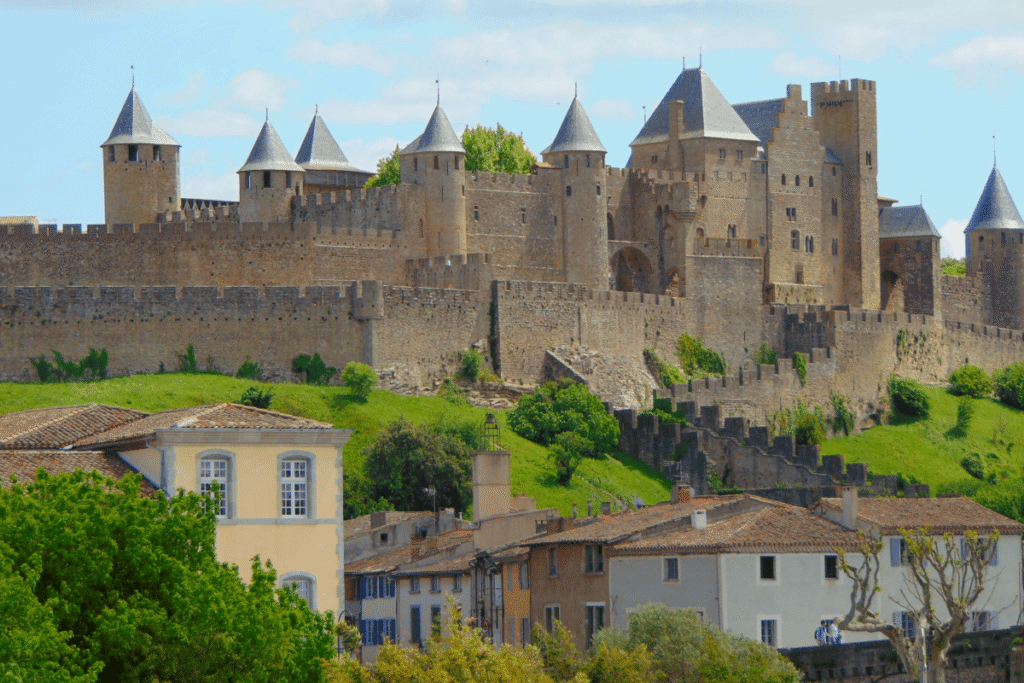
The city we see today is the result of centuries of history and legend. Carcassonne occupies a naturally strong position on a hill above the River Aude. In Roman times, the citadel was a vital point of trade and military passage for armies, traders, and pilgrims. The Romans first identified the importance of the position and fortified the site in the 1st century BC. The original walls were constructed using thick red brick and stone and form the basic structure for the medieval citadel built later on.
The site was further developed in the early Middle Ages, as evidenced by the size of the now Romanesque Basilique Saint-Nazaire. Carcassonne became an important stronghold in the 5th century, when it was captured by the Visigoths from the Romans, who began to add new defensive works to the site. The Saracens, in turn, followed the Visigoths and then, in the 8th century, the Franks, whose leader, Pepin the Short, took control of the city and its fortifications. The different styles of building techniques are clearly visible on the ramparts and defensive walls today.
Carcassonne became a citadel for Cathars in the 12th century and early 13th century. Cathars were a Christian sect with different beliefs from the Catholic church. They were gathering momentum in the area to the point where the Pope organised an Albigensian crusade to eliminate them from the area. Simon de Montfort, a leader of the Crusaders, besieged Carcassonne in 1209. After two weeks without water, the city capitulated. The Cathars were expelled, and the area became part of the personal estates of the French crown.
As part of the king’s estates, more attention and funding were given to the city’s defenses. In the reigns of Louis IX and later Philip III, the second ring of walls was constructed. This made Carcassonne one of the strongest walled sites in France. The double-walled, 52-towered complex was such that besiegers would not be able to penetrate the walls quickly, and their circumvallation wall allowed the garrison to hold out during prolonged attacks.
By the 17th century, the military strategic value of Carcassonne had declined. As a frontier fortress defending the border with Spain, the early medieval walls were too easy for newly improved artillery to breach. The 1659 Treaty of the Pyrenees moved the Franco-Spanish border south of Carcassonne, so the citadel’s location was no longer on the frontier. As trade declined, so did the city, and many of the walls were allowed to fall into disrepair. By the early 19th century, the walls were seen as a hindrance to development by some local townspeople, who petitioned the French government to have them destroyed.
The demolition was to be the work of only a few days in 1845, when the historian and architect Eugène Viollet-le-Duc intervened. He is famous for his work at Notre-Dame de Paris, Sainte-Chapelle, Mont Saint-Michel, and Vézelay, among others. In 1844, he began a major restoration project on the city. This, however, was not to everyone’s taste, and purists widely mock his techniques of reconstruction. Viollet-le-Duc began by rebuilding the missing towers and other elements of the defenses. The slate roofs covering each turret that we see today are one of his more controversial architectural insertions, since stone or lead roofs were far more common in the region during medieval times. The pointed roofs of the turret keepages make an attractive silhouette, which probably increased local and visitor support for the massive project. However, the extensive use of slate to cap each turret would certainly not have been seen in medieval times. The two-story windows with pointed tops, the armorial shields, and ornate parapets are also additions by Viollet-le-Duc and his successors, and were made in a deliberate attempt to mimic the original appearance of the walls.
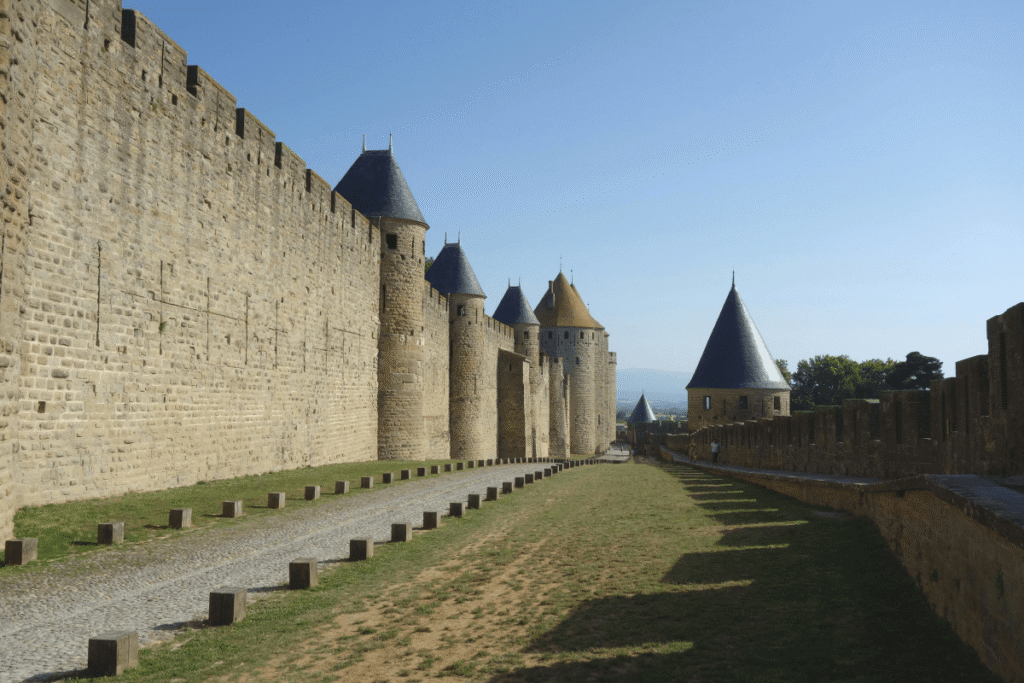
The Legend of Dame Carcas
Legend has it that during the period when the city was under Saracen control, the place was blockaded on two separate occasions. The invaders left their cavalry outside to prevent the inhabitants from foraging for supplies, and the city began to run low on food. One last sack of grain and one last pig were all that remained in the Carcassonne stores. The starving Saracens, confident of victory, made camp outside the city, waiting for the citizens to capitulate.
Legend has it that the city governor’s wife, Lady Carcas (or Dame Carcas in French), ordered the pig to be fed the last sack of grain, then the pig was flung over the city walls into the enemy’s camp. When the Saracens saw the pot-bellied pig, they assumed that the wealth of grain it was carrying must be a typical Carcassonne store. The Saracens abandoned their siege, not wanting to fight on to the point where the city was starved into submission. The legend goes that the city bells were rung in celebration of their victory, and the king’s messenger went to inform him of the good news, with the words “Carcas sonne!” ringing out across the countryside (sonne being a derivative of sonner, meaning “to ring”).
The legend goes that the king’s messenger told his lord, “Carcas sonne!” meaning “Carcas rings,” and so, by muddying of medieval French, the town’s name was bestowed. The statue of Dame Carcas overlooking the city at the Porte Narbonnaise is still there today. The story is almost certainly a myth. The history books show that the Saracen blockade was not for want of food but for the lack of water in the citadel.
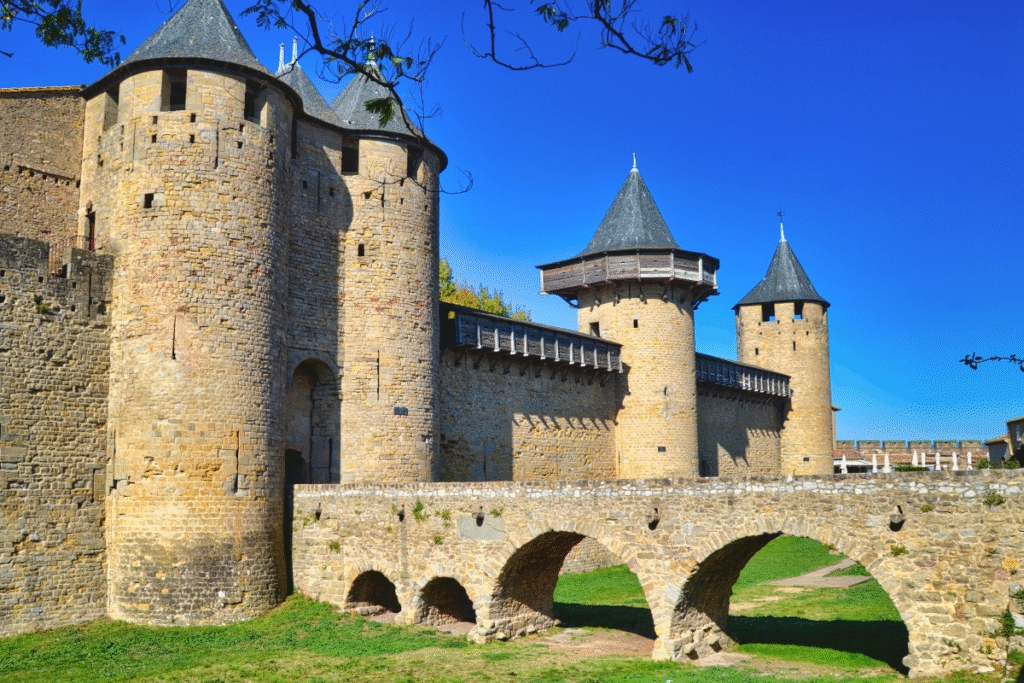
A Living Monument
As the saying goes, a little myth goes a long way, and it is probably fortuitous for Carcassonne that the historian, Viollet-le-Duc, took a creative license with the restoration of the citadel. The artistry he used in the restoration (sometimes a loose term for the 19th-century embellishments) has made Carcassonne one of the most complete medieval walled cities in Europe today. It draws more than four million visitors each year to a truly authentic medieval experience.
History is all around you. You are walking the same ground where Roman, Visigothic, Saracen, and Frankish soldiers once patrolled the walls and promenaded the turrets. When the sun breaks through the clouds in summer, light plays across the stone defensive ditches cut centuries before you were born. Time may pass and seasons may change, but the stones still carry the cold bite of history. In your imagination, the sound of swords clashing and mail rattling can almost be heard. The smell of death in the billeted garrisons, the shouts of the merchants in the covered market, and the aroma of cooking in the kitchens. You cannot escape the past at Carcassonne, and that is its magic. To an extent, each visitor has a different experience.
Standing on the walls, you are in the shade of the battlements as history flows past. If you watch closely, there is a glimpse of medieval life in every detail of the city. Look for it. You will see the Carcassonne of your own imagination and history books. It is in the polished, medieval heart of the Visigothic wall that still clings to the slope beside the Château Comtal. It is in the pointed Gothic windows of the Basilique Saint-Nazaire, where colored light falls like jewels across the flagstones. It is in the living history of the locals over a glass of Corbières wine, where the young and old make it clear that history here is lived as much as it is remembered.

Architecture & Design
Carcassonne’s architecture combines both power and beauty. This is the first impression you get when you approach the citadel: its silhouette, with two concentric walls that crown the hill on which it is built and break the horizon with their massiveness. Inside, the towers dotting the ramparts are partly square for the oldest Roman and Visigothic parts and partly round for the late medieval ones. The successive superimpositions of masonry that make up the city tell the story of its development from the time it was founded until its recovery.
The Double Walls
The outer wall is almost 3 kilometers long and is punctuated by 17 towers. The inner wall, shorter but higher, has 29 towers. The strip of land between the two fortifications is called the lice, where people could take refuge if the outer wall was conquered. The system of “double shell” is quite rare in Europe, which made the impregnability of Carcassonne during its golden age. The walls were built with a mix of local limestone and Roman brick, the latter remaining visible on the parts dating back 1,500 years.
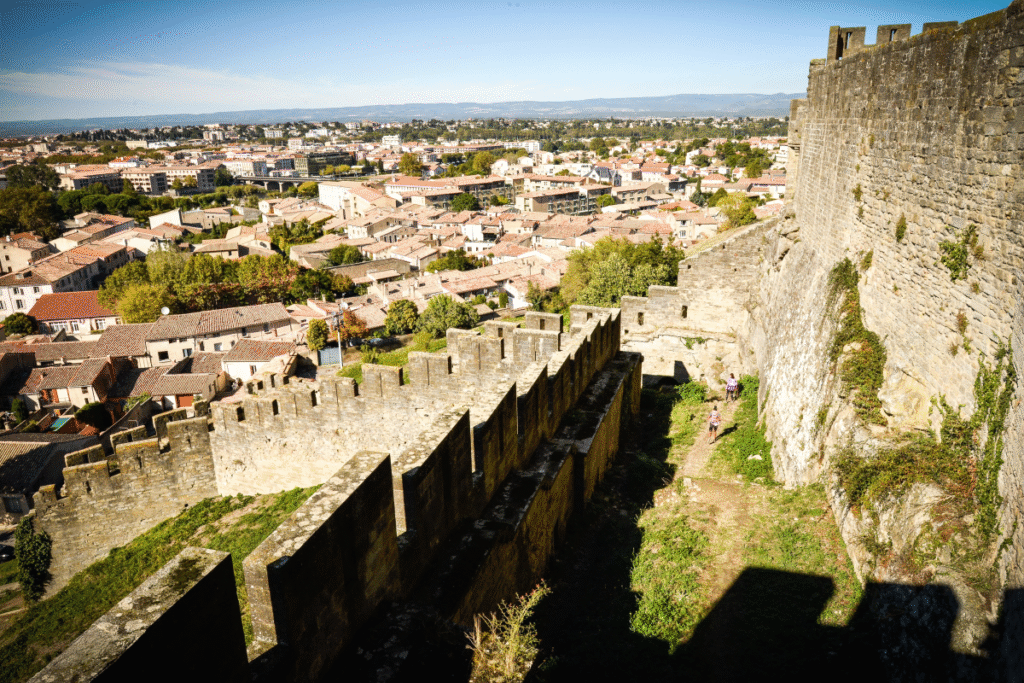
The defense functionality also characterizes the towers. They are fortified with arrow slits, machicolations, and spiral staircases designed to advantage right-handed guards. On the ramparts today, it is not uncommon to see the guides pointing out the winding country roads where the watchmen once had to keep a keen eye on all movement in the distance.
The Château Comtal
Dominating La Cité is the Château Comtal, literally the Count’s Castle. Built in the 12th century by the Trencavel family, it was from here that the lords of Carcassonne, during the golden age of the city, controlled and defended their land. The castle stands apart from the rest of the citadel by its own moat and curtain walls. A walk on the ramparts of the castle, equipped with some of the highest towers, is rewarded by a vertigo effect of views over the roof tiles of the Cité.
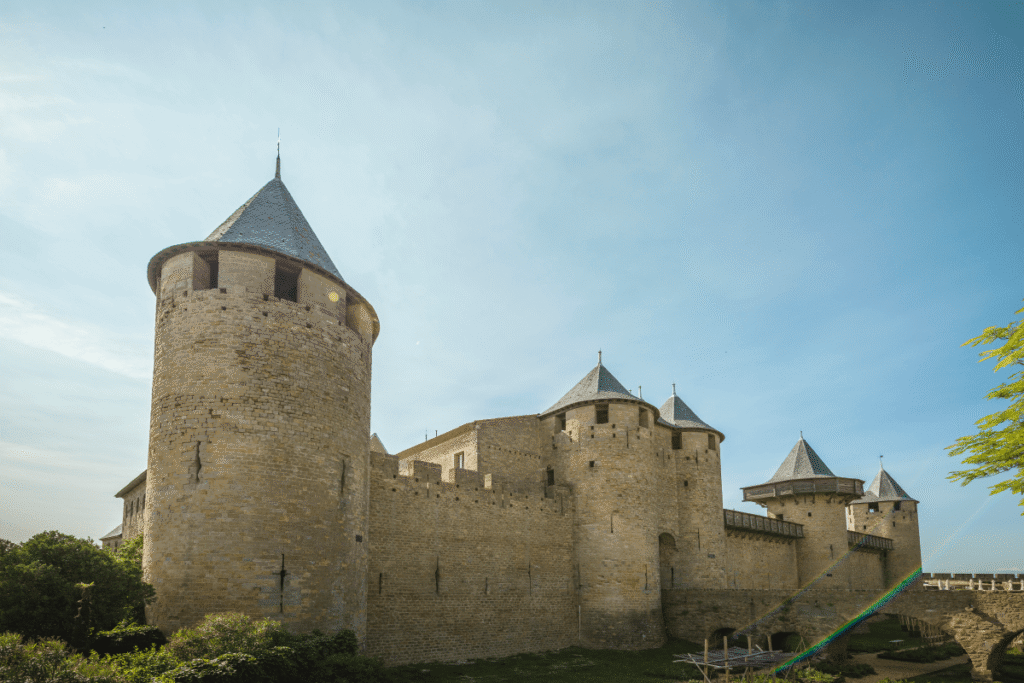
The panorama is also remarkable in the Aude Valley, with on the horizon the Pyrenees in Andorra. On the ramparts, the reconstructed wooden hoardings during the restoration period give an idea of the world that the defenders of Carcassonne had at their feet, a few dozen meters away. The castle is also home to a museum where are presented, in a visit accessible by lift for people with reduced mobility, part of the vestiges found during the excavations: Romanesque sculpture, medieval arms and armor, medieval frescoes, etc.
The Basilique Saint-Nazaire
The basilica of Saint-Nazaire is a central element in the religious life of Carcassonne. Built in the 11th century, it was rebuilt in part in Gothic style in the following centuries. Outside, the sober appearance of the basilica, with its heavy stone walls and squat towers, can make one think that, at that time, the cathedrals also had a certain dual function: to house the faithful as much as to allow them to find refuge in the event of an attack. Inside, on the other hand, it is an explosion of light on the pointed arches and some of the most beautiful stained glass in the south of France.
The imposing rose window of the western facade is bathed in the morning sun, and its rays of colored glass slide across the nave. In the choir, the scenes of the New Testament are illuminated in deep red and blue, their precious detail all the more astonishing as they date from the 13th and 14th centuries. In this church, which has not kept its original Romanesque style, but on the other hand, is adorned with later architectural elements, the tourist crowd gets lost in small currents of visitors lost in a sentiment of contemplation.
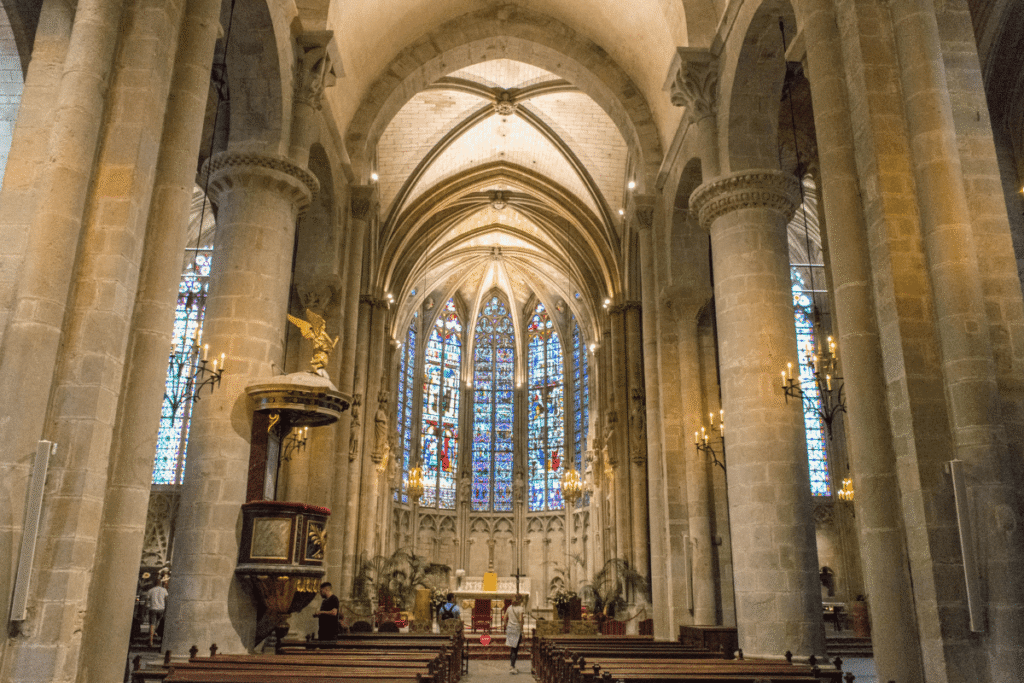
Streets, houses, and secret corners
Carcassonne is beautiful to visit, but it is also worth discovering beyond the everyday life within its ramparts. Behind the cathedral and the castle, the maze of streets that criss-cross the Cité is punctuated by houses in half-timbered buildings. Some of them, with upper floors overhanging the street, have their origin in medieval times and have served as residences for merchants and artisans.
Their workshops open directly onto the narrow cobblestone streets. Squares are found here and there, which hide shaded terraces on which one can enjoy a coffee or a glass of local wine. The wooden shutters of pastel colors open on premises embellished with flower boxes full of geraniums. Original building elements, such as an old door latch or a carved stone lintel on the fronts of houses, can be found side by side with perfectly restored premises.
A fortress that breathes
Carcassonne’s architecture fascinates, even for those who come several times a year. This is partly because, in addition to being an authentic monument, it also breathes and offers visitors the opportunity to inhabit it. The work of Viollet-le-Duc, master of French restoration in the 19th century, is often seen as an artistic bias that has enhanced, for better or for worse, the city of Carcassonne.
The slate conical roofs, so characteristic of the city today, are inspired by the fortifications of the north of France and are not a replica of the flat roofs that once covered the city. The overall effect, even if specialists can contest it, is that of a fortress at once authentic and taken out of a fairy tale. A work of restoration that has at least one great merit: to have preserved it for posterity.

The Practical Guide to Visiting Carcassonne (Real-Life Tips)
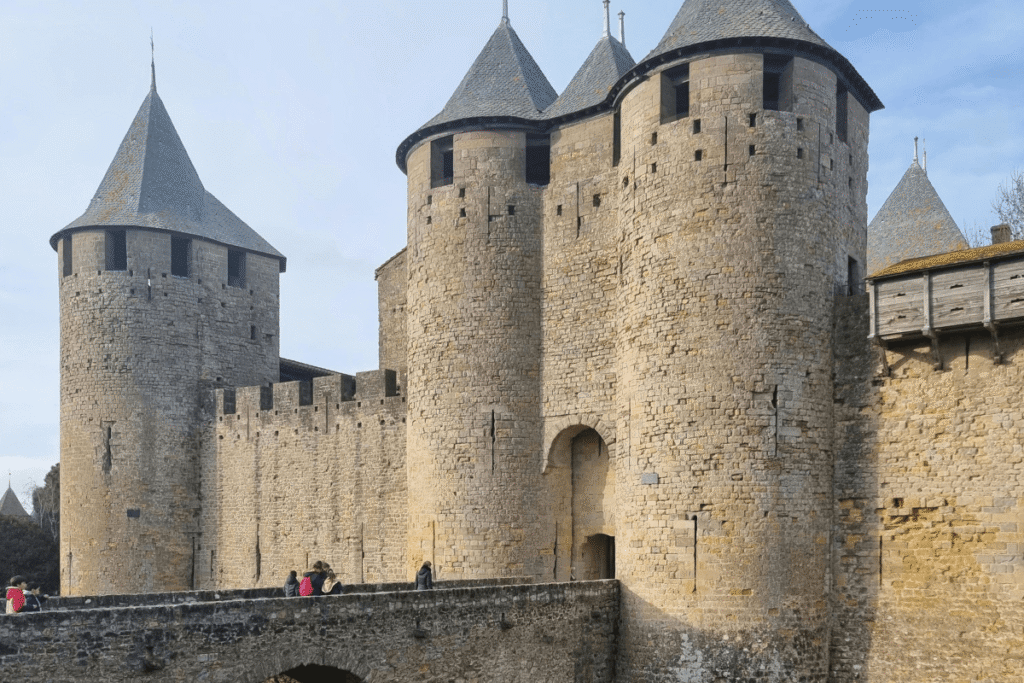
As Carcassonne’s towers come into view off the road, you can’t help but let out a “wow.” Above the valley of the River Aude, they rise like something out of an illuminated manuscript, their tapered spires and crenellated walls and double ring of fortifications seeming to defy time. But it’s when you step out of your car that it really comes alive, as you start to make your way toward the gates.
Arrival with Style
The train is the best way to arrive—after parking at Ville Basse station in the city’s modern lower town (Ville Basse), the old medieval city emerges with a slow-burn effect. It’s like a big reveal.
As you head towards the River Aude and cross the elegant Pont Vieux, there it is. The whole medieval city sprawls in front of you. That buzz, the one you get when you know you’re somewhere very special, hits you full on.
The walk from the station to the main gate is around 20–25 minutes.
By car, the road signs (follow La Cité on the A61 motorway) are only there to confirm what you can see from miles away: the turrets of the citadel. Parking in summer can be challenging because P1 and P2, by the main entrance, are popular and fill early, but you shouldn’t struggle if you arrive before 10 am.
Stepping through the Gates
The streets of Carcassonne are open to all. So once you’ve bought your ticket and passed through the Porte Narbonnaise main entrance, you can walk where you like. The small, winding streets are mostly taken up with a mix of cafés, restaurants, gift and clothing shops, and random little squares.
But the main event, and the real reason for paying the admission, is the Château Comtal and the rampart walk.
For around €19 (kids under 18 get in free), you get access to the Château Comtal (Count’s Castle) and the fortified walls surrounding the ancient city. Standing there on the ramparts, the wind whipping your hair, looking out over the walls and across the valley to the Pyrenees beyond, you can’t help but feel you’re in the right place for a siege or two. Check the official website for the most up-to-date visiting information.
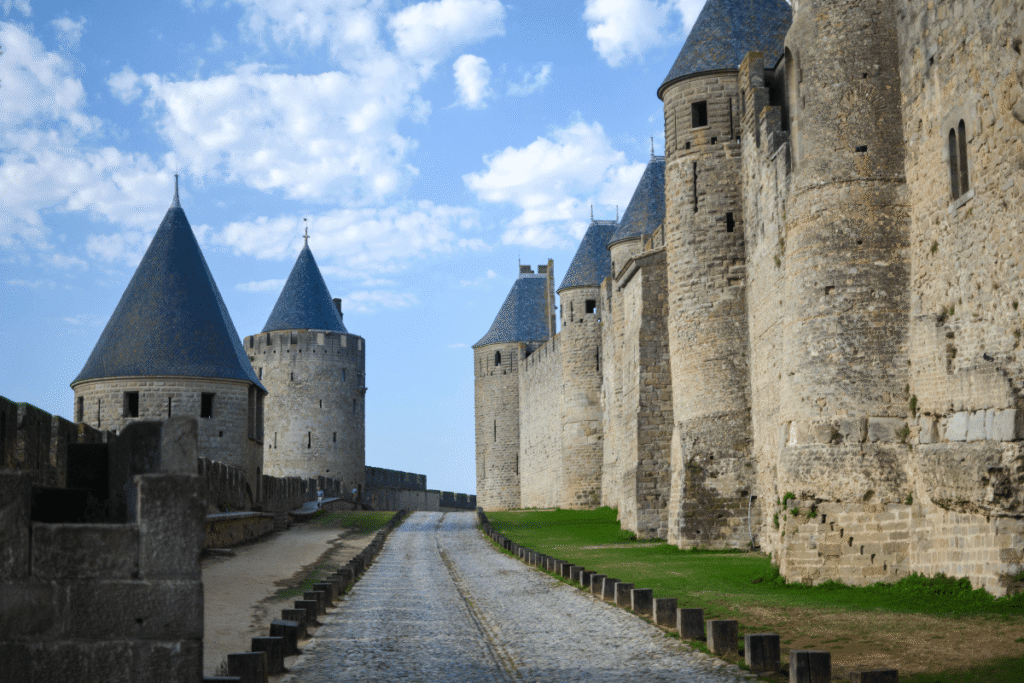
Timing is Everything
Carcassonne is one of the most visited tourist attractions in France, so if you can avoid the midday crush, you should. Mid-July and August are the peak times, and at those hours, parts of the city will feel more like a Paris Metro. If you’re here in the busy season, then mid-morning or early afternoon is best.
The shoulder seasons of May, June, September, and October offer better weather, smaller crowds, and often lower hotel rates. In the winter, the city quiets dow,n and the mornings are misty and cool. Some shops and attractions will be closed for the season, but you might have whole streets to yourself.
July 14 is the day not to miss, however. The Bastille Day fireworks are set off from different vantage points, lighting the fortress from top to bottom. Flames, lights, and color are projected onto the 13th-century walls in a spectacular play of light.
Stepping through the city gates, you’re stepping back in time. It’s all very ‘real,’ and a touch unnerving at first. The citadel is huge and the views are breathtaking. The steps of the ramparts are uneven and steep in places. Wear good shoes and avoid the narrow, cobbled streets if you have mobility issues.
It’s easiest to walk in the main thoroughfares, where there are few steps or challenging slopes. The ramparts and castle are a different matter, with steps and rocky ground. But once you’re inside, the main thoroughfares are straightforward.
To avoid the main entrance at Porte Narbonnaise, and the crush of visitors arriving from the A61 motorway, it’s well worth turning away and using Porte d’Aude on the opposite side of the citadel. Quieter and more attractive, you’ll enjoy the climb from the Pont Vieux as the ramparts give you ever-more cinematic views.
Eat and Drink in La Cité
You can’t go to Carcassonne and not eat cassoulet. This hearty stew of white beans, duck confit, sausage, and pork is the city’s emblematic dish, and every restaurant will have its own version of the ‘real’ cassoulet.
The one inside Comte Roger is as good as it gets. Rich, hearty, with the beans soft and the duck falling apart, order it to share as a starter with friends and enjoy on the shaded terrace overlooking the medieval city. If you want a fine-dining take on this 13th-century classic, book a table at La Table de Franck Putelat in the lower town (Ville Basse). A Michelin-starred offering that remains authentic.
If you want something lighter and less expensive, there are creperies and wine bars on the side streets. Bar à Vins Le Trivalou is a local favorite for a laid-back glass of Corbières or Minervois. Anise-scented fougasse bread and croquants (crunchy almond biscuits) are good sweet snacks, and both will keep well if you want to take some home as souvenirs.
Pro-tip: Eat just outside the fortress in summer to avoid the lunchtime rush and inflated prices. Restaurants in Ville Basse tend to be less busy and more local.

Perfect Views and Photographs
If you want those picture-perfect postcards, then start your visit on the River Aude. Stand on the Pont Vieux with the citadel fortress rising in front of you and the early-morning light spilling over its turrets, and this is one of the most iconic spots in France.
For sunset, walk to the west, toward the vineyards beyond the city walls. At the golden hour, the light hits the stone and sets it aflame. Inside the citadel, the tiny winding lanes are equally photogenic, soft and atmospheric, in the late-afternoon glow—especially once most of the day-trippers have left.
A Hidden Moment in the Fortress
One of my favorite memories of Carcassonne isn’t on the ramparts or in the grandest hall of the Comtal. It’s tucked into a tiny artisan shop. I ducked inside to escape the midday sun and ended up talking to an elderly craftsman in a back room making miniature wooden knights.
His tools were worn smooth by years of use, and he told me his family had been working in the shop since the 1800s. He wrapped my purchase in paper printed with the legend of Dame Carcas and smiled at me, saying, “Now you have a part of the story.” It’s those unplanned moments, personal and private, that make Carcassonne more than a set of museum-piece streets.
Making a Day of It
If you only have one day, then start early. Enter by the Porte d’Aude, stroll the outer ramparts, and take a spin around the Château Comtal. Duck into the Basilique Saint-Nazaire while the morning light spills through the stained glass.
Lunch in the lower town (Ville Basse) or have a picnic between the walls in the lice (grass strip between the two outer and inner fortifications). Spend the afternoon in the Château Comtal and at the ramparts, allowing two hours to do the tour. Wander some of the quieter streets in search of souvenirs before dinner.
If you’re staying overnight, time for an evening stroll. The streets, lit by warm, orange lamps, have a completely different feel.
Beyond the Fortress
There’s a lot to do around the fortress, too. The Canal du Midi runs through the city, and you can take a short cruise or walk the towpath under the plane trees. In under an hour’s drive, you can explore the four ruined castles of Lastours, the abbey village of Lagrasse, or the Roman history of Narbonne.
Wine lovers can follow the Corbières and Minervois routes for tastings in small, family-owned vineyards.
Tips From Experience
- Bring good walking shoes, as those cobbles are hard.
- Have a water bottle in summer. Shade is limited on the ramparts.
- The souvenir shops inside the citadel are expensive—head for Ville Basse to find better deals and more variety.
- Stay overnight if you can. When the crowds disappear, the city sighs, and you can walk medieval streets almost alone.
Carcassonne is a big draw for good reasons. The history, atmosphere, and views will keep you occupied all day. You can tick it off the itinerary in a few hours and leave satisfied, but that would be a shame.
Slow down. Walk medieval streets almost alone in the early morning. Pause for a drink and let the sun pour over the ramparts. Step inside a quiet chapel. Take your time, give the city space, and let it tell you its stories. You’ll leave with more than photos. You’ll take with you a little of the city’s rhythm, the legends that inhabit it, and its beating heart.

Beyond La Cité
There’s plenty of other stuff to see and do outside of La Cité, much of it largely ignored by day-trippers.
Ville Basse (Lower Town):
Head over the Pont Vieux for the more everyday face of Carcassonne. Developed in the 13th century after the fortress was integrated into the crown of France, the lower town has a more human scale, with wide avenues, shady squares, and the lively market at Place Carnot three times a week. There’s no tourist markup here, and it’s a great place to stock up on regional cheeses, olives, and pastries.
Canal du Midi:
This UNESCO World Heritage site in its own right is also a 17th-century marvel. The Canal du Midi meanders lazily through Carcassonne, the flat, tree-lined towpaths providing ideal conditions for sauntering or cycling, and boat cruises leave frequently from the port.
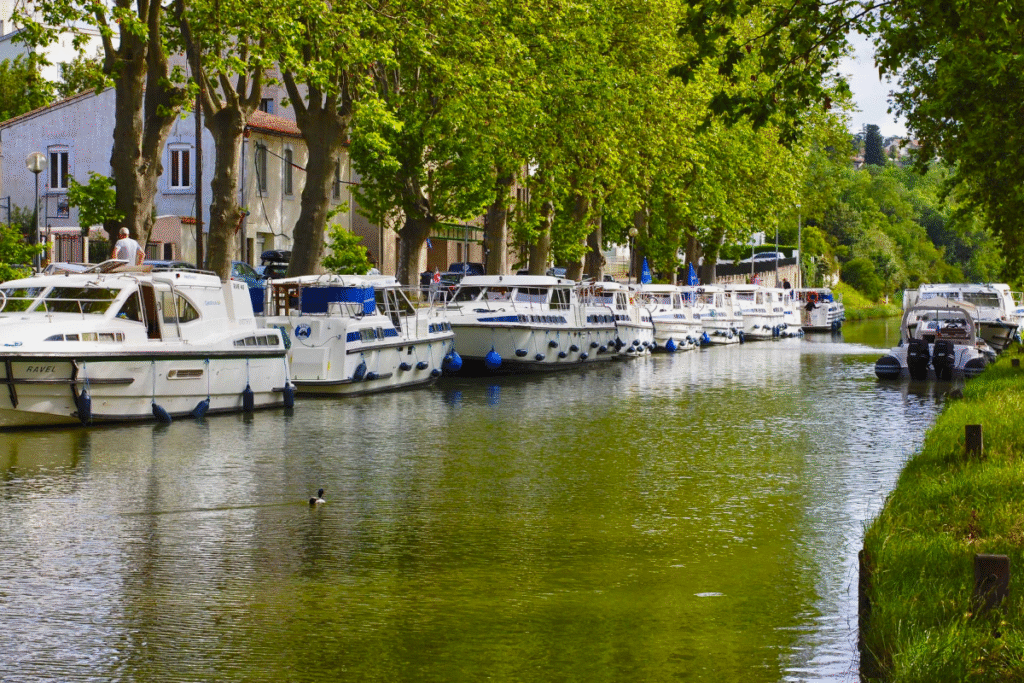
Lagrasse:
A forty-minute drive takes you to Lagrasse, a medieval village officially designated as one of Les Plus Beaux Villages de France for a reason, with its 8th-century abbey and pretty stone bridges.
Lastours Castles:
Sitting high above the Orbiel Valley, these four ruins of medieval fortresses are a hiker’s dream. Trails between each of the castles at Lastours offer great views and a real sense of the Cathar legacy.
Narbonne:
Less than an hour’s drive from Carcassonne, Narbonne is a well-preserved Roman town with a languid Mediterranean atmosphere. It also has one of the region’s best covered markets.

FAQ – Visiting Carcassonne
Is Carcassonne worth visiting in winter?
Yes. Fewer crowds make it easier to explore. Misty mornings give the citadel a moody, atmospheric feel. Fewer shops open, but most major sights do.
How long should I spend in Carcassonne?
Plan for at least one full day to see the highlights. If possible, spend the night. Visiting after the day-trippers leave is magical.
Can you visit La Cité for free?
You can roam the streets, shops, and Basilique Saint-Nazaire without paying a fee. Entry to the Château Comtal and the ramparts costs a ticket.
Are dogs allowed inside the fortress?
Leashed dogs are allowed in the public streets but not inside the Château Comtal or on the ramparts.
When’s the best time to avoid crowds?
Arrive early or visit in the late afternoon. Carcassonne is also less busy in the shoulder seasons: May–June, September–October.
Can you drive inside La Cité?
No. Only local residents and hotel guests with special permits are allowed inside the walls. Visitors must park outside.
Where’s the best spot for photos?
The best photo opportunities are from the Pont Vieux across the River Aude, looking at the walls of Carcassonne. Sunrise or sunset is best.
Is Carcassonne a good place for families with kids?
Yes, especially if they enjoy towers, battlements, and open spaces to run around. Be careful of steep stairs and uneven cobblestones.
Are there things to do in the evenings?
In the summer, there are night tours of the ramparts, and the streets are beautifully lit for a stroll.
Can you visit Carcassonne and the nearby sights in one day?
Yes. Day trips from Carcassonne to the Canal du Midi, the Castles of Lastours, or a local vineyard are all a short distance away and combine well with a half-day in La Cité.
These FAQs are intended to answer the most practical questions about planning a visit to Carcassonne.
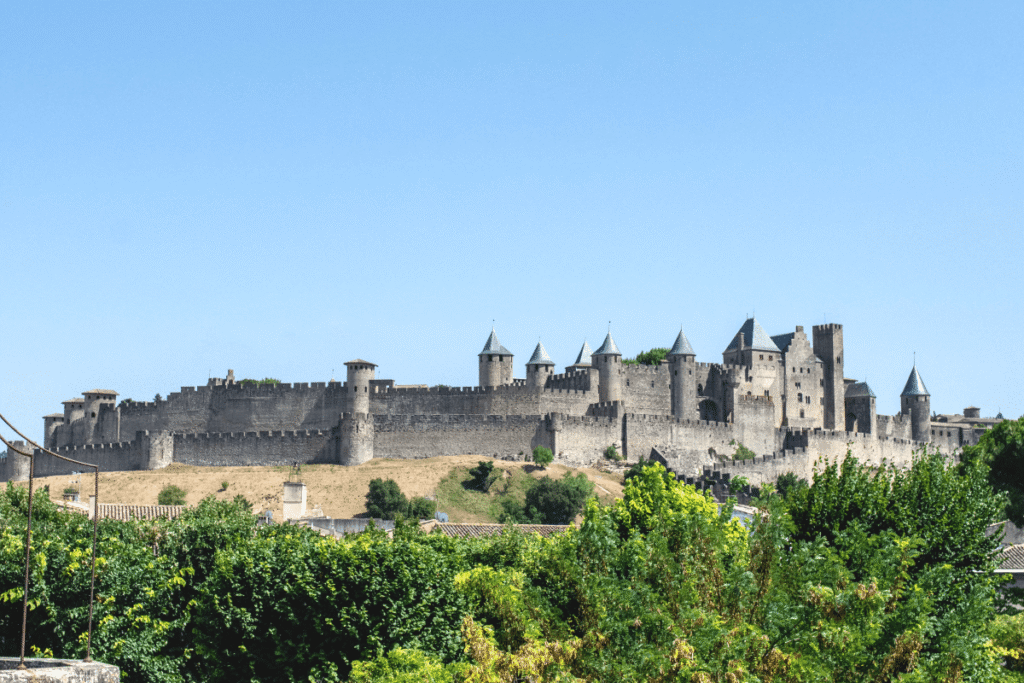

Final Thoughts
Overall, a visit to Carcassonne is not like any other stop on a French itinerary. From the very moment you cross the drawbridge, you are immersed in history until your last look back at the illuminated ramparts. During the day, this is a stage for centuries of battles, trade, and storytelling. At night, it becomes so much softer: lamplit alleys, quiet courtyards almost hidden from view.
From sweeping views of the ramparts to the taste of cassoulet in a dining room with ancient roots to the thrill of walking streets once patrolled by knights, Carcassonne will leave its mark on you.
💬 If you’ve been to Carcassonne, we would love to hear your stories! What was your favourite moment? Drop a comment below with your stories and tips. Or tag us on Instagram @CastleQuestChronicles!
👉 And if you want more castle adventures, check out these guides on the “Top 15 Haunted Castles in Europe” and on the “10 Unforgettable Castles to Visit in France Today”.
🏰✨Thanks for reading. If you found this article interesting, be sure to follow us along. We are also on Instagram, Facebook, Pinterest, YouTube, TikTok, and X. You can also see all our castle stories here! More castles (and more stories) are on the way.

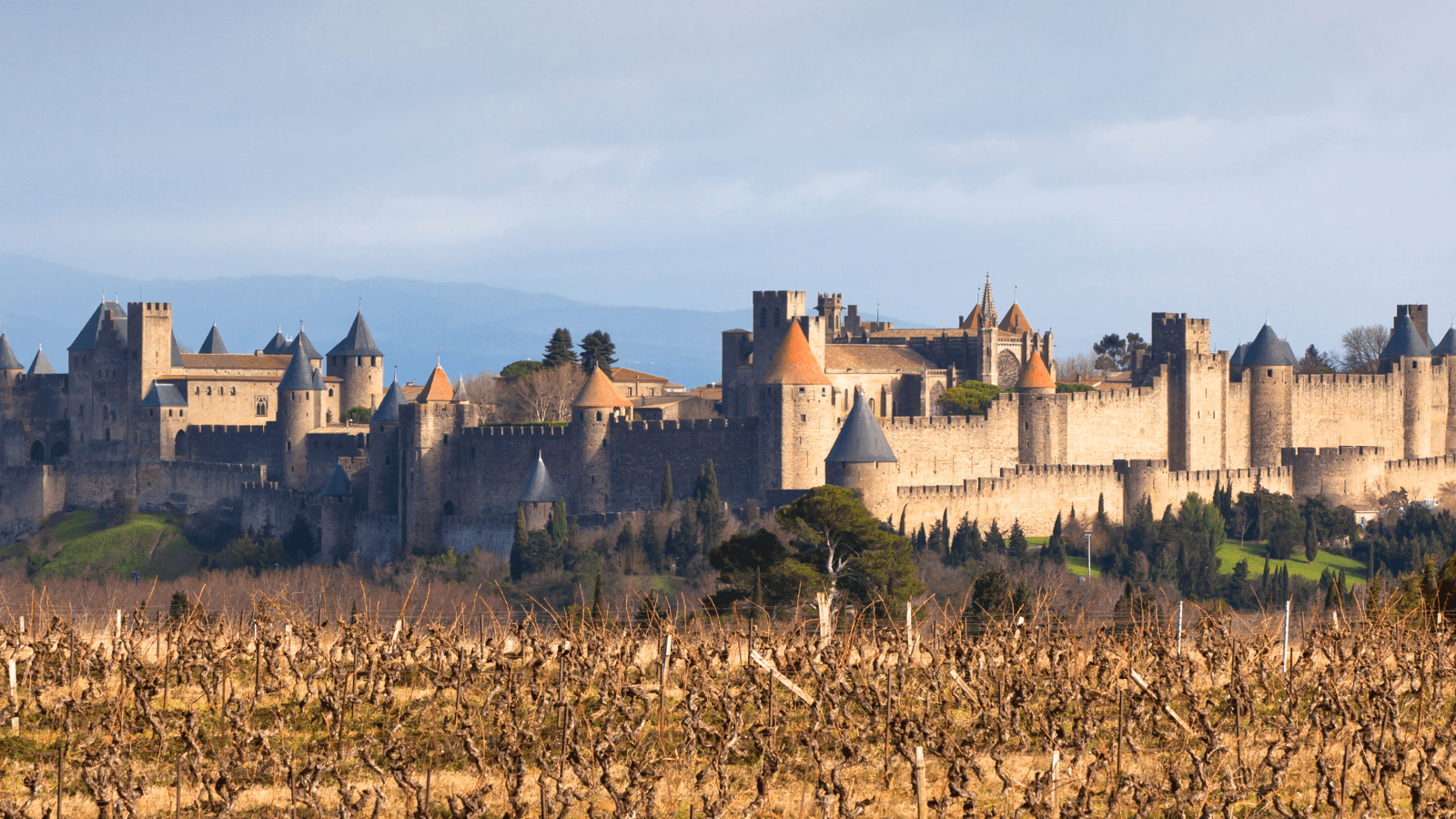

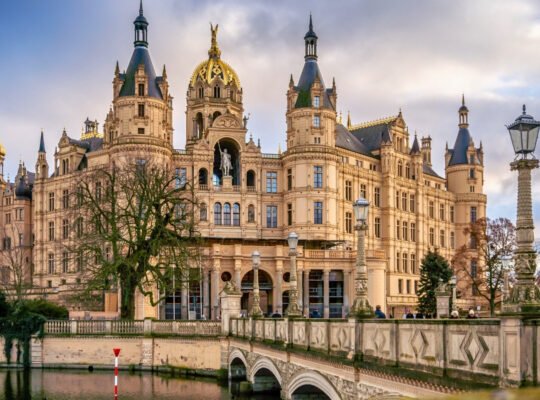

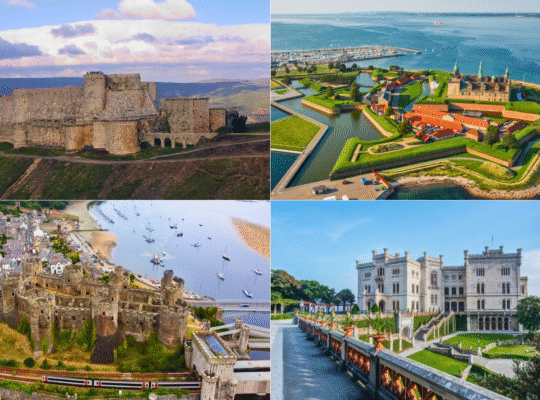
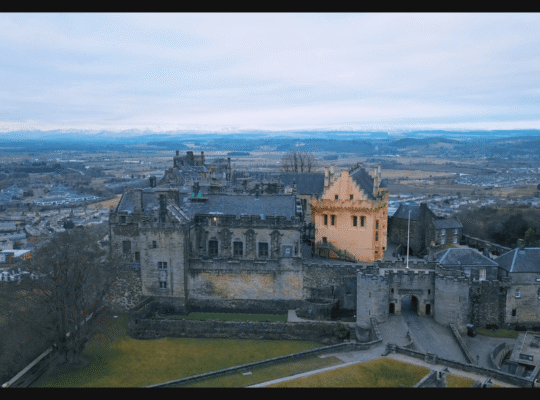
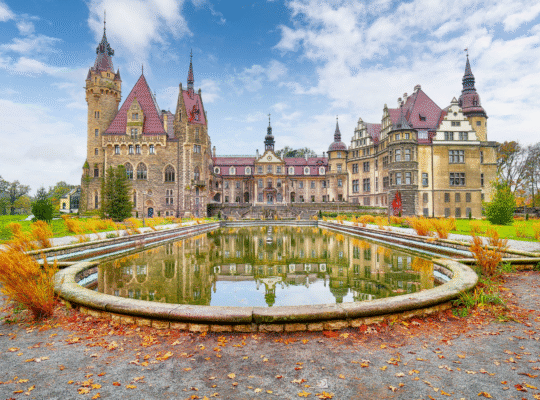
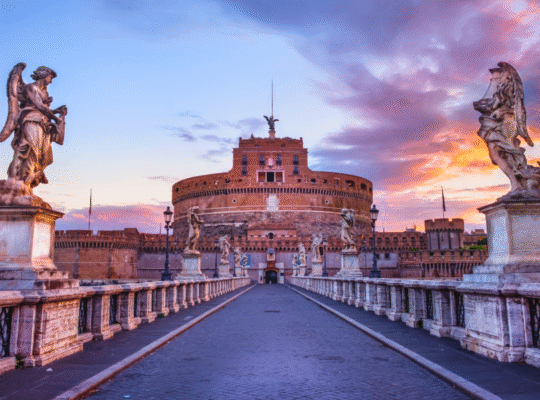

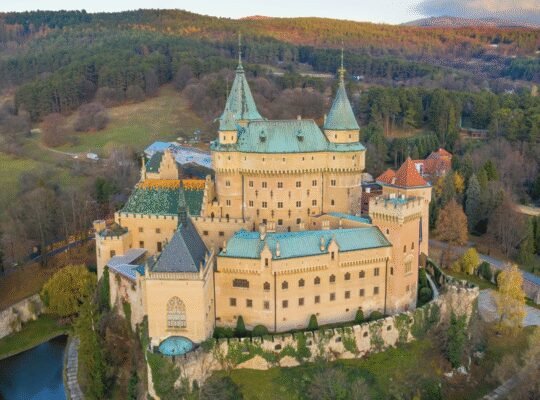
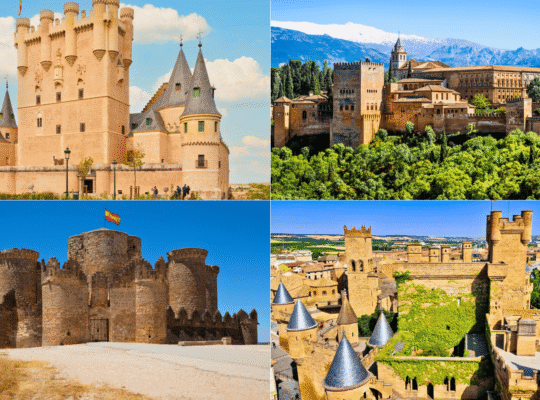
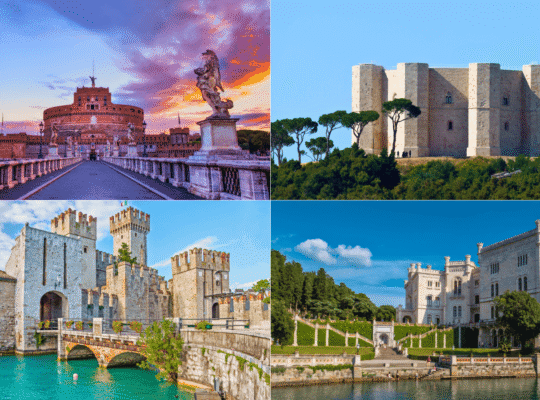
2 Comments